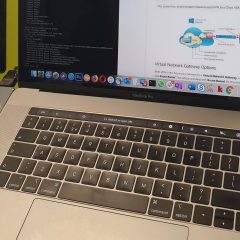Ubuntu: Allow SSH access for ‘root’ user
KB ID 0001317 Problem First of all not being able to connect to your Ubuntu server via SSH as root is ‘by design’, and it’s a perfectly good security measure. I do find it interesting that every hosting company I ever used, spin up a new machine and then email me the root password and they’ve enabled it anyway? I needed to enable this recently and the internet is full of posts saying ‘just edit the...
MAC TFTP Software (OS X )
Mac TFTP KB ID 0001247 Problem Every time I go to a networking event theres a sea of MacBooks in the audience, If techs like MacBooks so much why is there such a lack of decent Mac TFTP software? Solution The thing is, I’m looking at the problem with my ‘Windows User’ head on. When I have a task to perform I’m geared towards looking for a program do do that for me. OS X is Linux (There I said it!) Linux in a...


